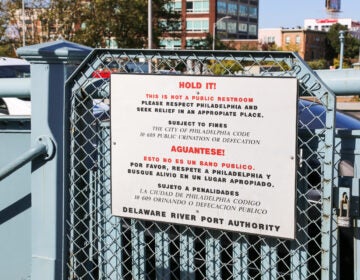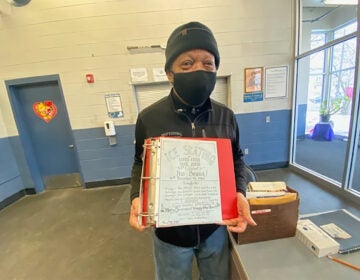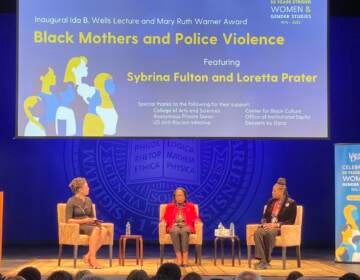Black Lives Matter and rainbows: How Philly windows got political
The pandemic turned a place for cozy seasonal displays into a space for public dialogue.
Listen 8:35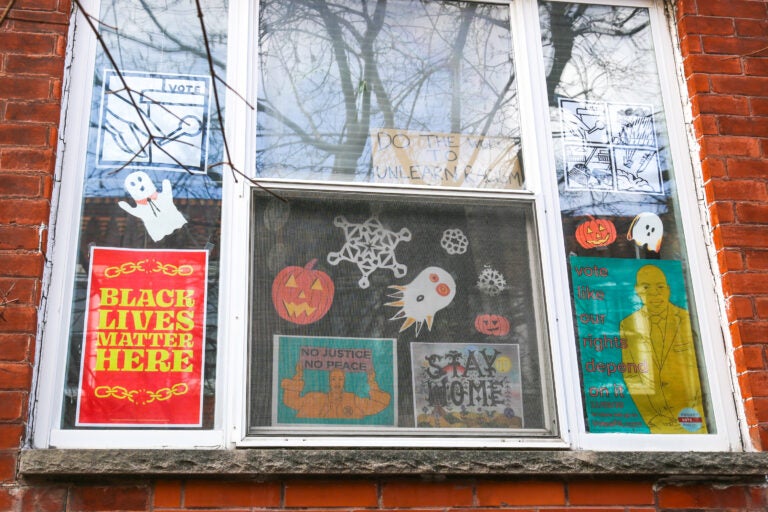
A Philadelphia household mixes political signs and holiday decor in their front windows during the turbulent fall of 2020. (Conrad Benner for WHYY)
Welcome to Our Space, a new collaboration between writer Conrad Benner, PlanPhilly, and WHYY’s News and Information Community Exchange. Our goal: to talk with Philadelphians about the spaces we share.
Something unexpected is happening across Philly. That is — our windows seem to be speaking to us a lot more than usual. In a year where we are virtually locked inside our homes due to a pandemic, and confronting a lot of political drama — hello historic protests! Historic election! Attempted coup! It seems we’ve found a new way to communicate with our neighbors. Those thin panes of glass that separate the public from private space have become a go-to medium for sending messages, signaling our identities, and sharing our hopes and values with the people walking by.
Before 2020, Philly’s windows displayed electric candles, plants, seasonal and holiday decorations, or religious paraphernalia, if they displayed anything at all. Growing up in Fishtown, my family was the seasonal/holiday window type. At election time, sure you’d see some candidate signs too, but that was really the bulk of it. But the pandemic has shifted the mood of Philly’s window habit.
Amy Letson, a resident of the Roxborough/Manayunk area, is a photographer who’s working on a project to document this moment.
“This is very much a unique time,” Amy explained when I asked her why she thinks it’s important to create a record of it. “I don’t think we’re ever going to see this again.”
It seems to have started with quarantine and rainbows. Soon after the initial coronavirus public safety measures were enacted last March and non-essential workers were asked to stay at home, a campaign called #OnePhillyArt invited Philadelphians to draw or paint rainbows to display in their windows. A fun activity to keep our minds and families busy, the rainbows also served as signs of hope and togetherness in a time of genuine fear and unease. And soon you found rainbowed homes in spots across the city.
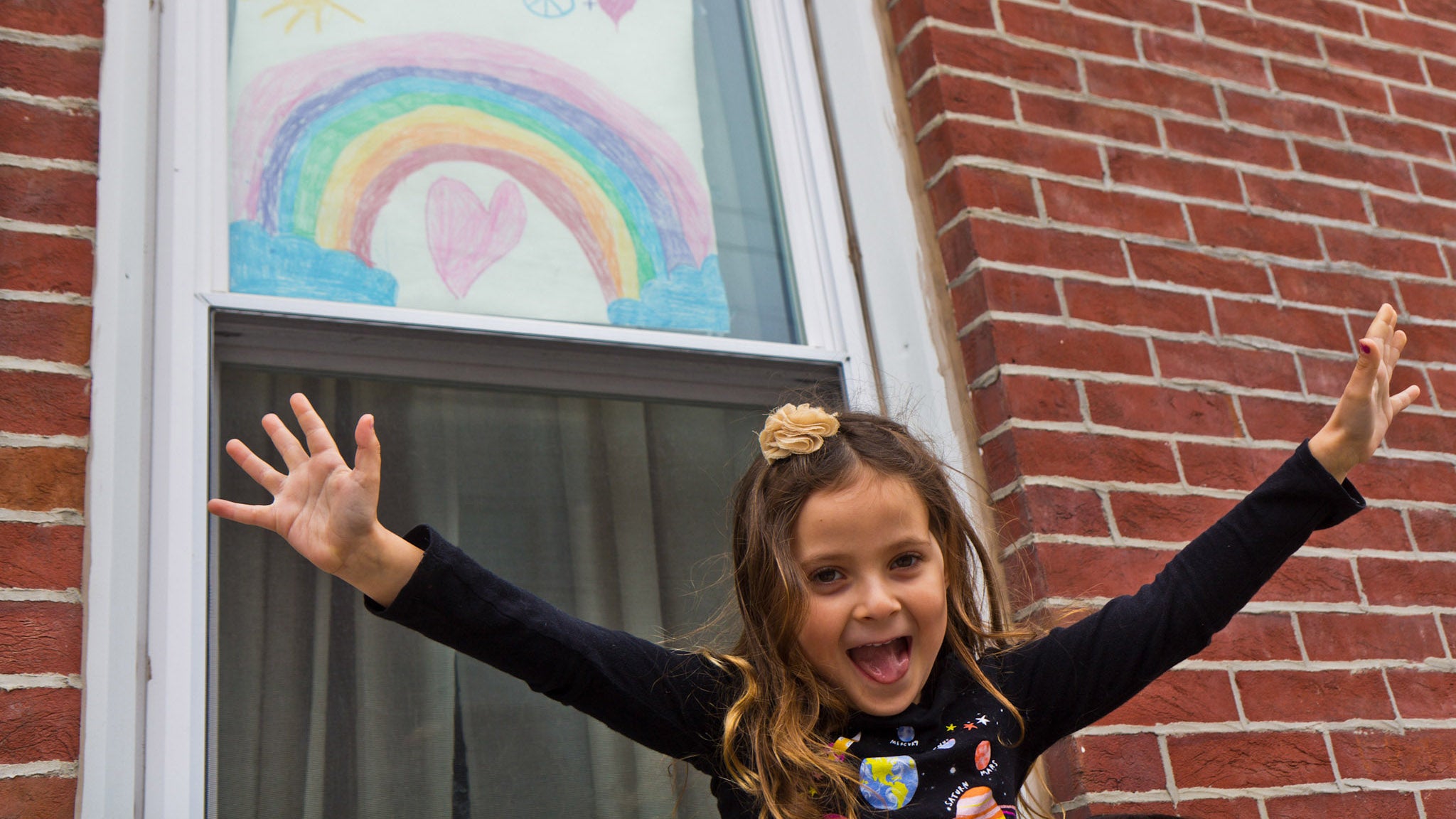
Summer 2020 of course saw historic Black Lives Matter protests across the country and here in Philly, and many who participated in those protests began to soon display protest signs in their home windows.
Bill Fitch, a South Philly resident, displays an “end qualified immunity” protest sign in his window. Qualified immunity protects law enforcement officers from civil lawsuits, even when they stem from excessive force cases that result in brutality or death. Bill hopes the sign can start conversations about the issue with passersby.
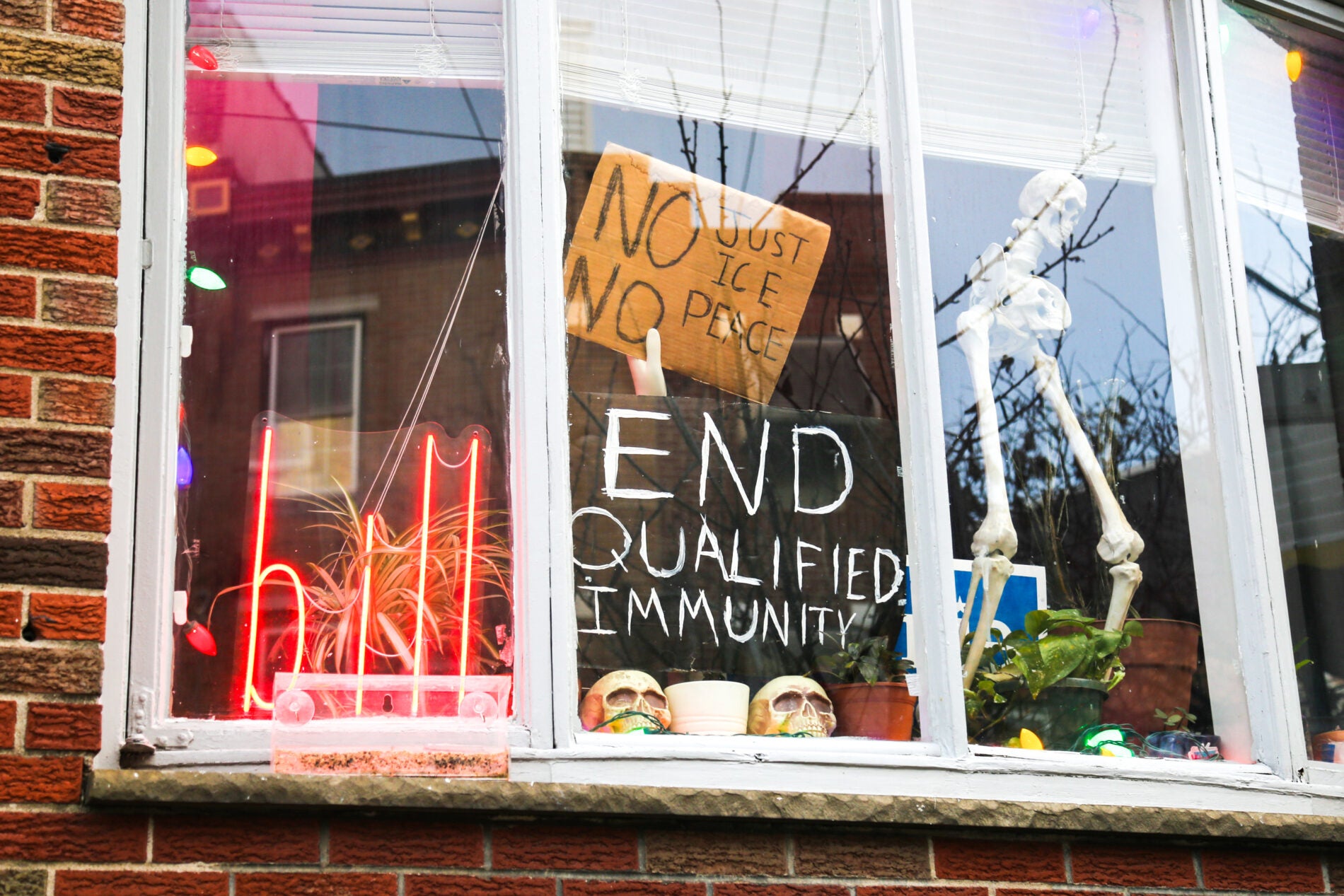
The 2020 presidential election also spurred countless Philadelphians to use their windows to display candidate signs and even information on how and when to register and vote. And as we headed into the holiday season all those political, protest, and rainbow signs were joined by Holloween and Christmas decorations. It seemed Philadelphians weren’t going to let go of their newfound billboard space — not even for Santa.
Signs in windows make perfect sense for Philly, a city full of tightly packed rowhouses with windows that face out to busy streets. Look out of your own window and you’ll likely see a dozen others looking back at you. Take a short walk and see many more — all of them opportunities for your neighbors to share with you. Your own window is a chance to respond in turn.
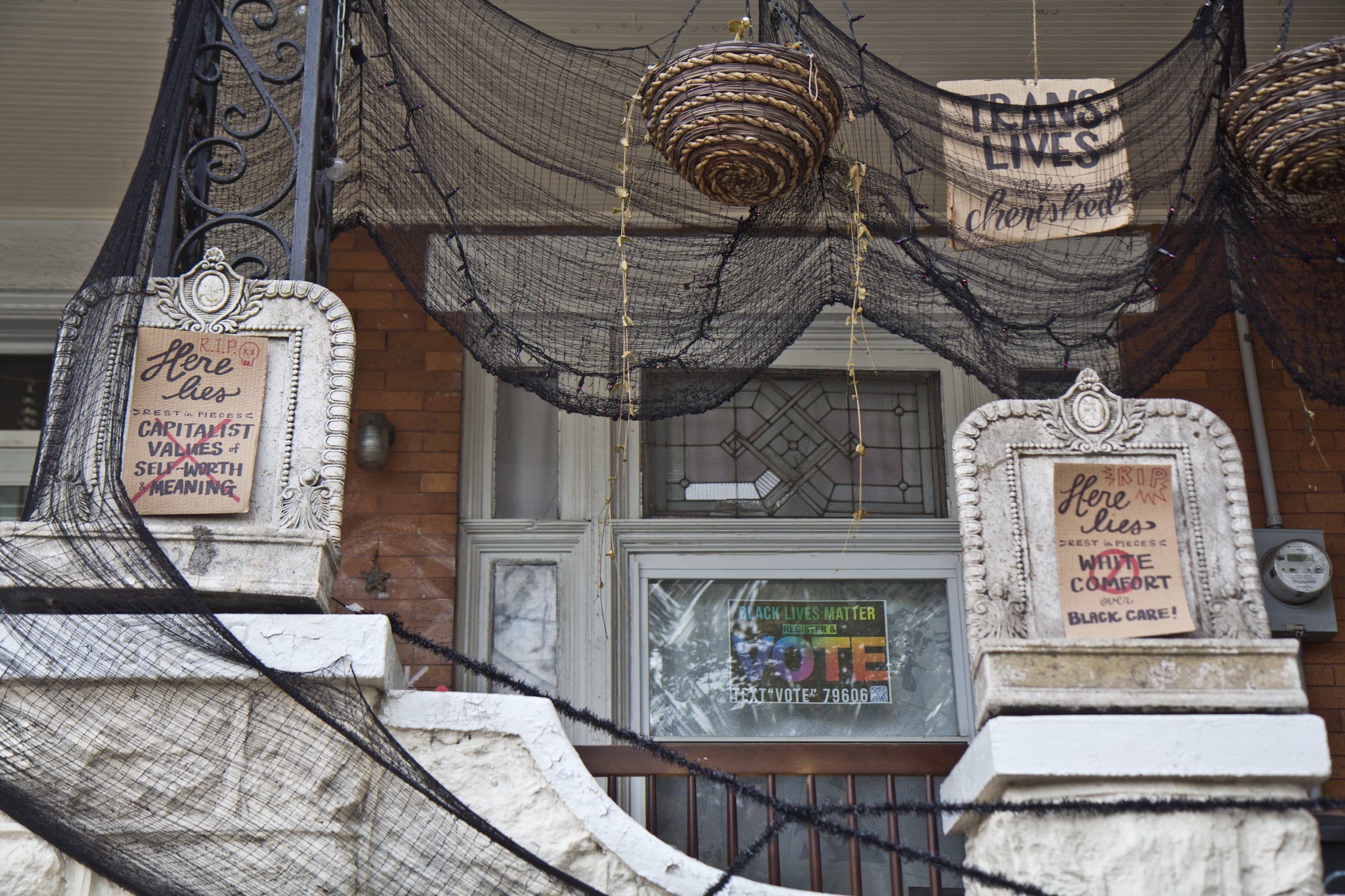
The Howard Beale moment, but quiet?
In the weeks before the election, Vanessa Rosensweet, who lives in West Philadelphia, noticed a generational divide between residents who displayed Biden signs and those who have signs demanding more progressive policies.
“There are a lot of young radicals who kind of clash with middle-aged, or parent-age people who are definitely all in for Joe Biden,” she said. Vanessa said she doesn’t have any signs in her windows — all the signs she’s made lately are for protests.
Michael O’Bryan, another West Philly resident, has noticed the signs too. He describes the signals of calls for justice and equity as “useful, to a point.”
“I just hope that everybody with signs are also willing to put pressure on all of our elected officials and on the mayor’s administration,” Michael said.
The last year has kept us isolated facing a pandemic, a reckoning of racial injustice, economic instability the likes we haven’t seen in generations, and, arguably, the most contentious presidential campaign and transition our country has ever witnessed. And without the normal kinds of events where you might discuss and vent about the world with loved ones, our windows have become the sounding board.
In the 1976 cinematic classic “Network,” newsman Howard Beale rises from his anchor chair to demand viewers go to the window. “Stick your head out and yell and say, ‘I’m mad as hell and I’m not going to take it anymore,” he shouts. Not sure what Beale would make of Philly’s window signs but I see them as a step toward heeding his call. Now we wait to see what effect it all might have.

Subscribe to PlanPhilly
WHYY is your source for fact-based, in-depth journalism and information. As a nonprofit organization, we rely on financial support from readers like you. Please give today.




